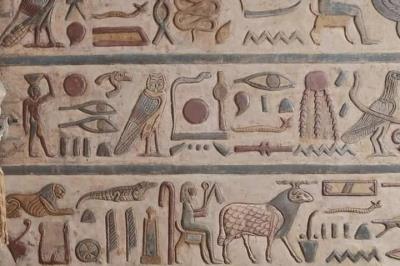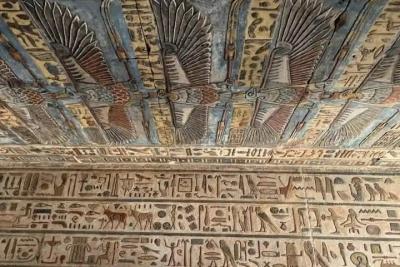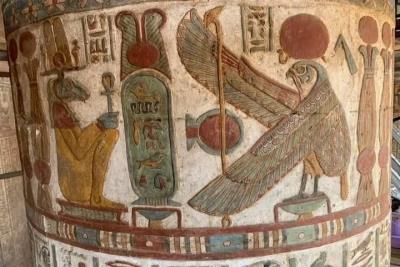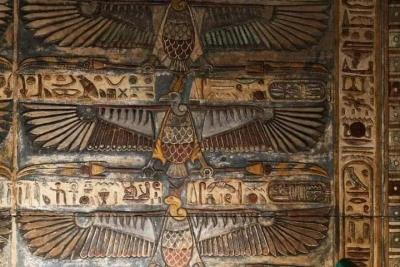(MENAFN- IANS)




By S.Ravi
New Delhi, May 31: Painstaking restoration work of Egypt's Temple of Esna, has brought to light amazing art works which reveals a lot about this ancient civilisation. It was not that historians were unaware of the engravings as per a report in smithsonianmag.com but since it was covered for 1,000 years by grime nothing was known.
The restoration of this ancient temple's interior with its inscriptions and drawings cleared, has unveiled an amazing range of colours which are brilliant and vibrant just as the builders had seen them thousands of years ago.
The work of bringing the temple back to its old glory was undertaken by the University of Tubingen in collaboration with the Ministry of Tourism and Antiquities of Egypt.
Bright hues were the hallmark of temples of ancient Egypt. Commenting on this, Christian Leitz, Head of University of Tubingen's Egyptology Department, in a statement said: 'Temples and representations of the gods of antiquity were often painted with bright colours but they have mostly faded or completely disappeared due to external influences.'
The temple has, apart from some Greek inscriptions and hieroglyphics on the ceilings and walls, 46 images of goddesses Nekhbet and Wadjet.
To clean the 49-foot-tall vestibule – the only part of the temple which is still standing -- the scientists and restorers used alcohol for removing the layers of dust, soot, bird poop, cobwebs and dirt.
Interestingly, the temple which is 30 miles south of Luxor was at one point of time in history used as a refuge by early Christian Copts to escape persecution by the Romans. The lamps and candles they used added to the dirt on the temple ceiling and walls yet it was also beneficial as it veiled the artwork allowing it to endure.
Closely examining the temple has revealed to the researchers that the temple is dedicated to the god Khnum and his consorts Menhit and Nebtu besides Heka his son and Neith goddess. Being the Egyptian god of fertility, Khnum was connected with water and portrayed as a man with a ram's head. Others like Menhit was the lion goddess related to war, Heka was the god of magic and medicine and Neith was believed to be the patroness of the city of Sais.
Apart from these gods, there are also several paintings of Nekhbet and Wadjet – referred to by the people of ancient Egypt as the 'two ladies'. While the former was a vulture goddess who was worshipped as the protector of Upper Egypt, the latter who protected Lower Egypt was a cobra goddess.
The temple which houses 46 depictions of the goddesses has portrayed them in the form of vulture bodies with wings that are outstretched. Nekhbet is shown donning a bowling-pin-like crown of Upper Egypt with a vulture's head, while Wadjet sports the red crown of Lower Egypt with a cobra's head.
The Ministry of Tourism and Antiquities in Egypt in a statement said the Greek inscriptions were also found on the western wall of the temple. These inscriptions drawn in red ink include dates and probably commemorate the year when the temple was completed. The temple hieroglyphs show that the premises were used likely between 180 B.C.E. and 250 C.E.
This period pertains to Ptolemaic and Roman rules of Egypt. Talking to Al-Monitor, Egyptology researcher Bassam el-Shammaa, said that the Temple of Esna is one of the many temples constructed by the Greeks in dedication to Egyptian gods. This was a way to help foster better relations with the people, they ruled.
There is a possibility that there are buried parts of the temple that are yet to be discovered. In fact the work of restoration is still continuing with not even half of it cleaned so far.
(The content is being carried under an arrangement with indianarrative.com)
--indianarrative
MENAFN31052022000231011071ID1104297208
Legal Disclaimer:
MENAFN provides the information “as is” without warranty of any kind. We do not accept any responsibility or liability for the accuracy, content, images, videos, licenses, completeness, legality, or reliability of the information contained in this article. If you have any complaints or copyright issues related to this article, kindly contact the provider above.